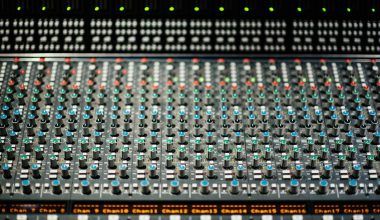In the ever-evolving world of music, there’s often confusion about the differences between an album, an EP (Extended Play), and a single. If you’ve ever asked yourself, “Can an EP have 7 songs?” you’re not alone. Many artists and music enthusiasts grapple with this question, especially when crafting or categorizing their musical projects. Let’s break it down and uncover the details behind EPs, their typical structure, and whether 7 songs fit the mold.
What is an EP?
Before diving into the specifics of song count, it’s essential to understand what an EP is. EP stands for “Extended Play,” and it’s a music release that is longer than a single but shorter than a full-length album. Typically, an EP ranges from three to six songs, with a total runtime of 10 to 30 minutes. However, these numbers aren’t set in stone.
In many cases, EPs are a way for artists to experiment, share a collection of songs without committing to a full album, or provide fans with more music between major releases. The flexibility of an EP makes it a popular choice for both emerging and established artists.
Can an EP Have 7 Songs?
Now, here’s the big question: Can an EP have 7 songs? The answer is… it depends. While the traditional definition of an EP limits it to six songs or fewer, music isn’t bound by strict rules. Many platforms and distributors have guidelines for categorizing music releases, and these can vary.
For example:
- Spotify considers a release with four to six songs and a total runtime under 30 minutes an EP.
- Apple Music and other streaming services may follow similar guidelines but often focus on runtime rather than song count.
- If a release exceeds these criteria, it might be classified as an album instead.
So, while 7 songs could technically qualify as an EP in some cases, the total length of the music often plays a crucial role in determining the classification.
Why Might an Artist Choose an EP?
Releasing an EP has several advantages, especially in today’s fast-paced music industry. Here’s why many artists gravitate toward EPs:
- Flexibility: EPs allow artists to release a concise collection of songs without the commitment of a full album.
- Experimentation: They offer a chance to explore new sounds or themes without the pressure of a large-scale project.
- Engagement: For newer artists, EPs are an excellent way to build an audience and keep fans engaged.
- Budget-Friendly: Producing an EP is often less expensive and time-consuming than a full album.
If an artist has 7 songs, they might choose to label it an EP if the total runtime aligns with EP standards. Alternatively, they could release it as a short album or split it into smaller EPs for strategic purposes.
Examples of EPs with 7 Songs
While less common, there are examples of EPs with seven songs in the music industry. These releases often blur the line between EPs and albums, showcasing how flexible the definitions can be.
For instance:
- Some artists might call their release an EP despite having 7 songs to emphasize its experimental nature.
- Others may rely on streaming platform guidelines to determine the classification.
Regardless of the label, what matters most is how the music resonates with listeners.
EP vs. Album: What’s the Difference?
It’s easy to mix up EPs and albums, especially when the line between them isn’t always clear. Here are some key differences:
- Length: Albums typically have 8 or more songs, with a runtime exceeding 30 minutes.
- Purpose: Albums often represent a complete body of work, while EPs might focus on a specific theme or experiment with new sounds.
- Cost: Albums require more resources to produce, making EPs a more budget-friendly option.
Understanding these distinctions can help artists make informed decisions about how to present their music.
How to Decide if Your 7-Song Release is an EP or Album
If you’re an artist wondering whether your 7-song collection qualifies as an EP, consider the following:
- Check the Runtime: If your songs collectively run under 30 minutes, you’re likely in EP territory.
- Consider Your Goals: Are you testing the waters, or is this a fully realized project? Your intention can influence the label.
- Platform Guidelines: Look up the requirements of the streaming platforms you’ll use to release your music.
The Future of EPs in the Music Industry
As streaming continues to dominate the music landscape, the traditional definitions of EPs and albums are becoming more fluid. Artists now have the freedom to release music in ways that suit their creative vision and audience preferences. Whether it’s 3 songs, 7 songs, or more, the focus is shifting from strict categories to the overall impact of the music.
Conclusion: Can an EP Have 7 Songs?
In the end, the answer to “Can an EP have 7 songs?” depends on your perspective and the criteria you follow. While traditional guidelines suggest an EP should have fewer than 7 songs, there’s room for flexibility. What matters most is how the music connects with listeners and fits within the artist’s vision.
If you’re an artist, don’t let definitions limit your creativity. Whether you call it an EP, a short album, or something entirely new, the most important thing is sharing your music with the world. After all, great music transcends labels.
For further reading, explore these related articles:
For additional resources on music marketing and distribution, visit DMT Records Private Limited.






